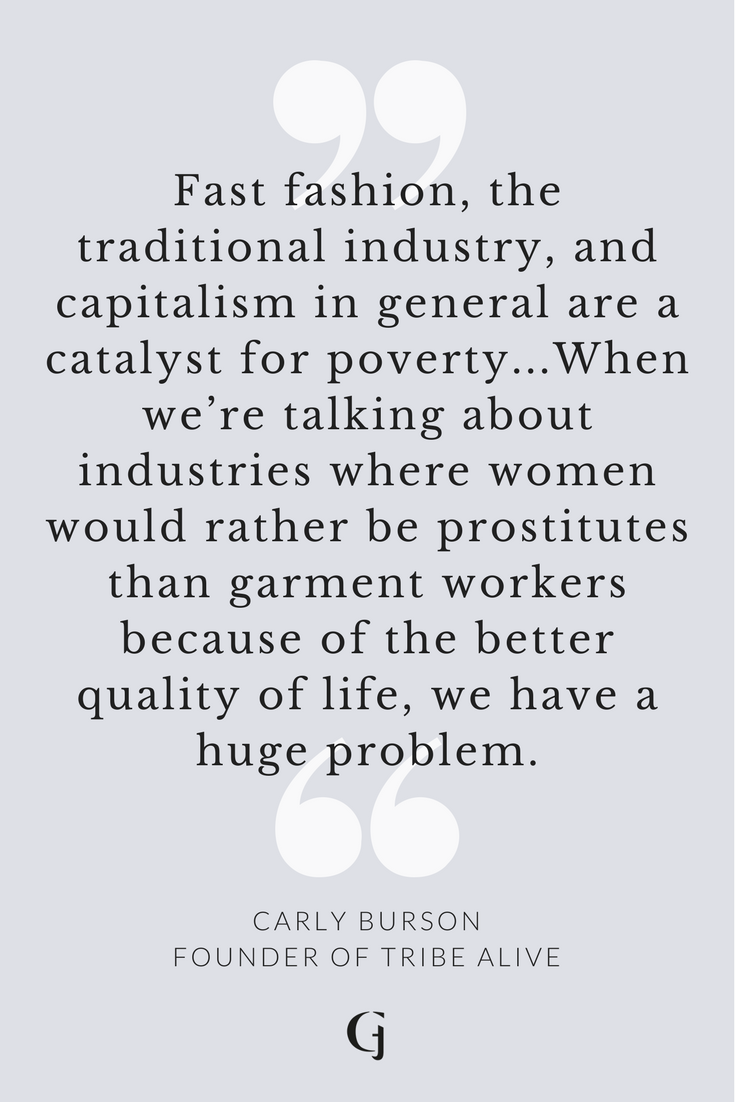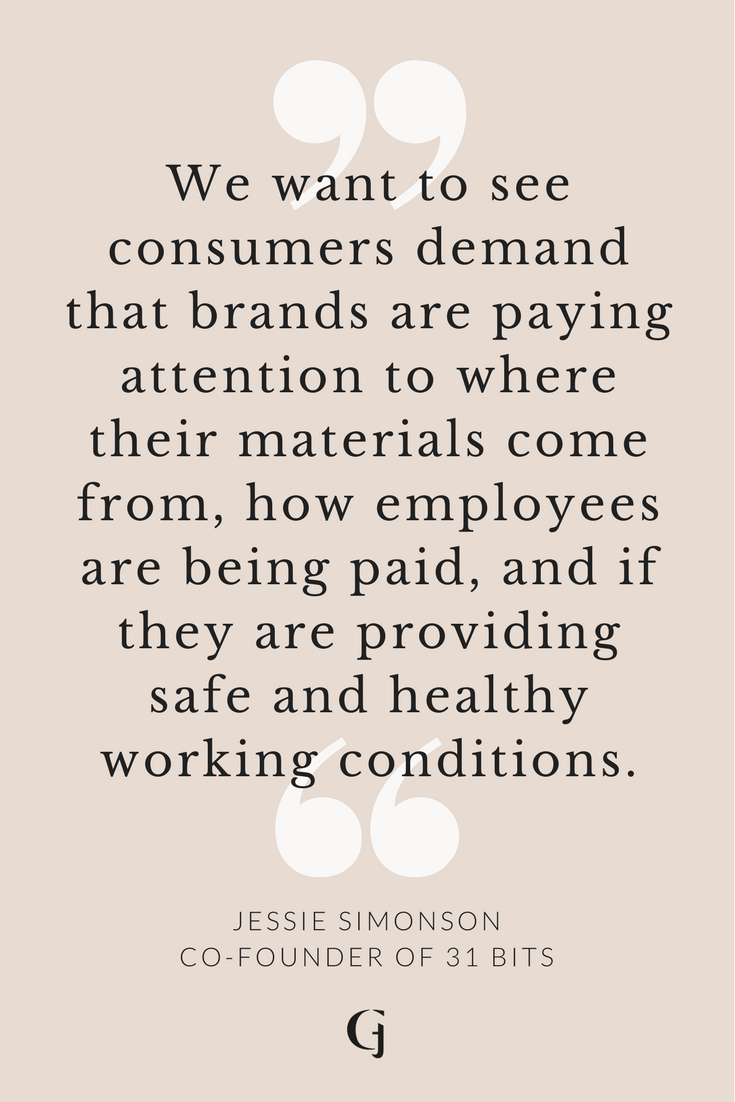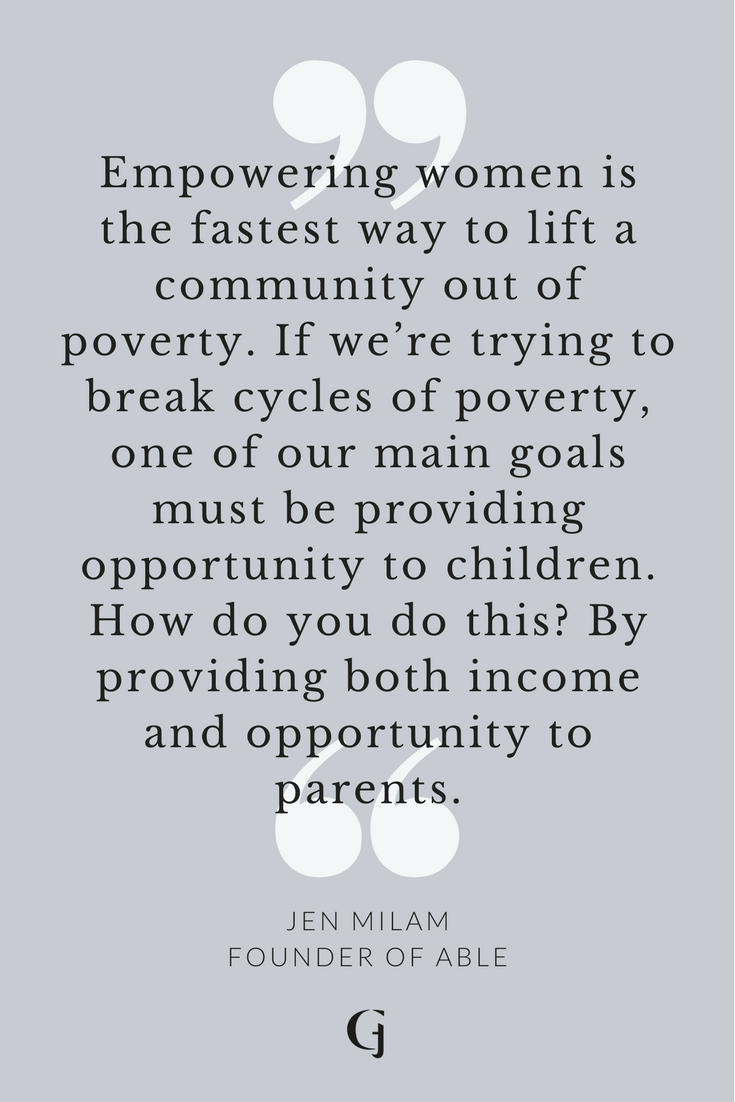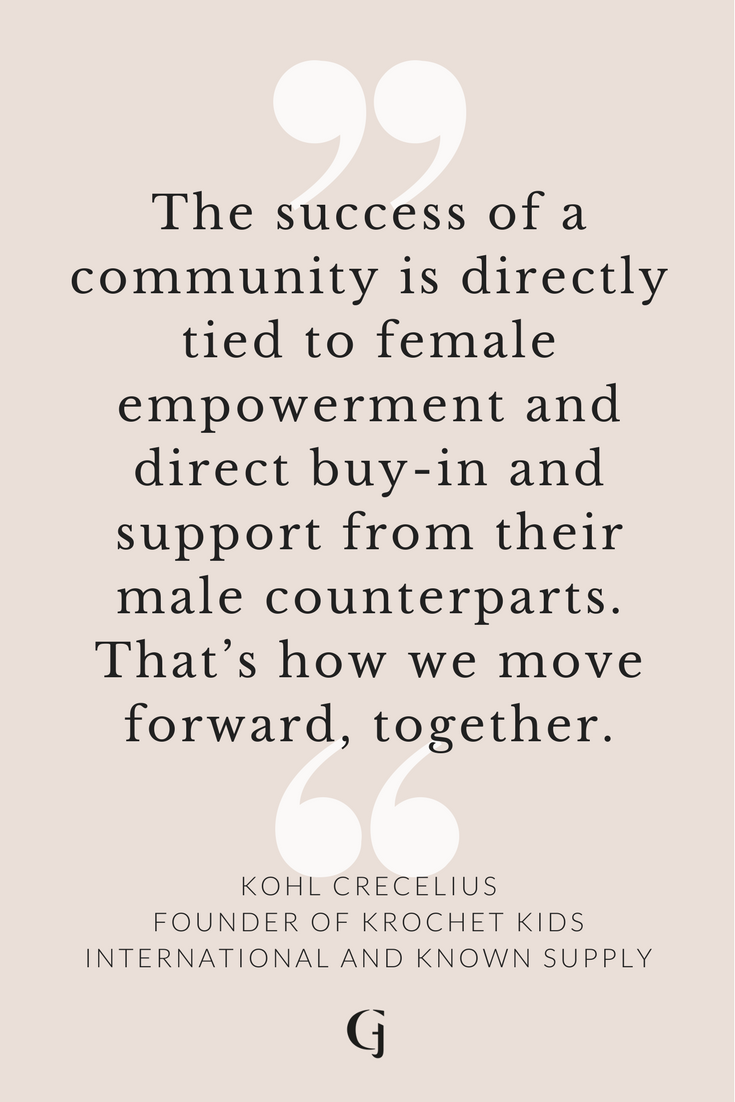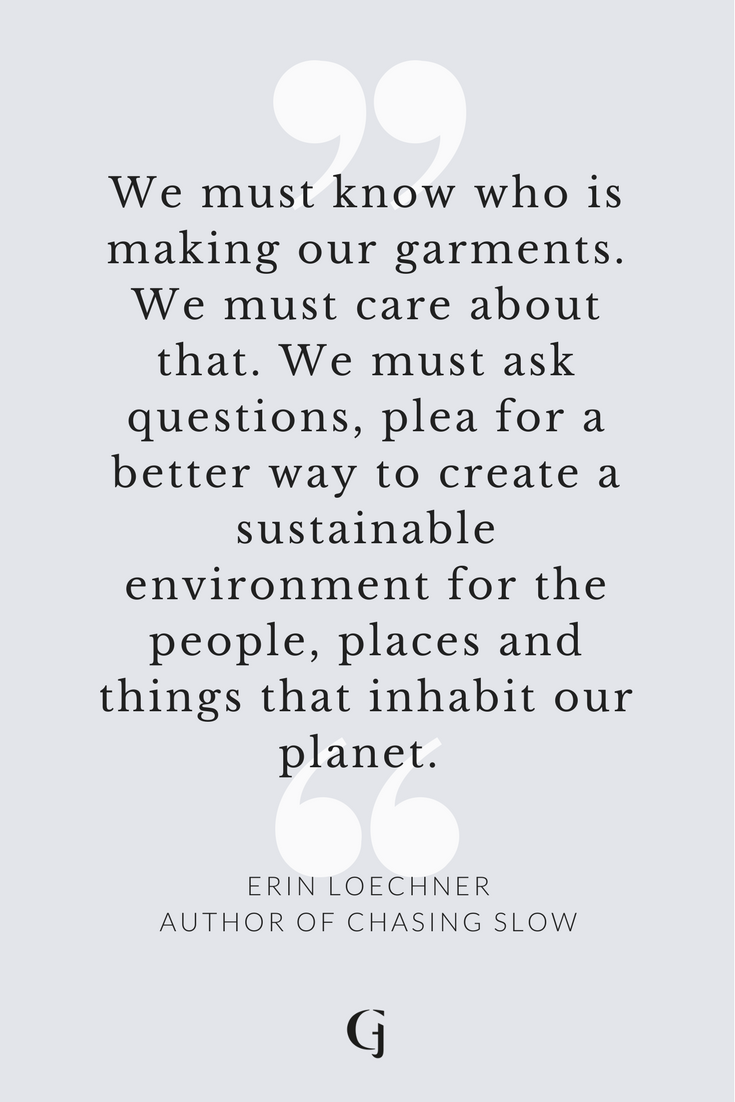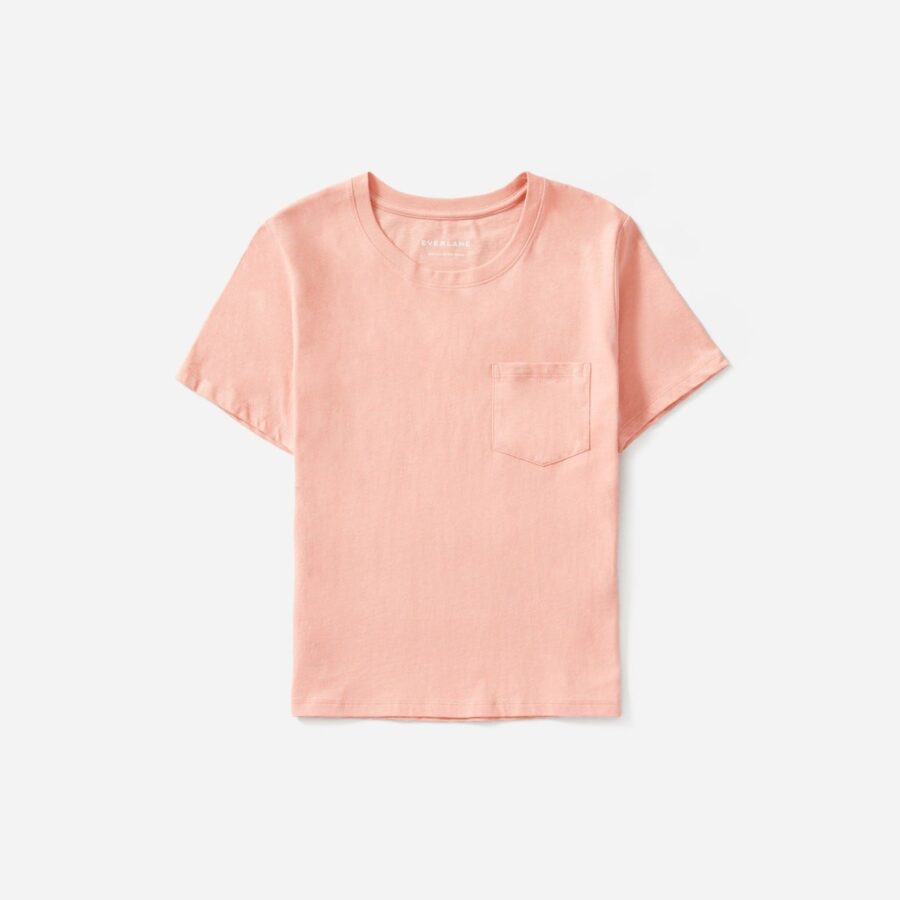
On Fashion & Feminism: The Industry Perpetuating Poverty Is Also The Most Powerful Force To Change Quality Of Life For Women Globally
Who made my clothes?
A look into the daily life of a Guatemalan weaver and her family
It was dry season in Guatemala and there hadn’t been rain in months. The earth was cracking and dusty, tin roofs were hot and rusty, and behind the gate the family’s clothes were drying in the Central American sun. A worn path led from the small courtyard to the makeshift squat toilet out back; a dusty curtain offered some semblance of privacy. To call it sanitary would be a stretch.
What the home lacked in sanitation it made up for in soul.
Isabel was a seventeen year old, on scholarship to high school as part of a local leadership program and I was fortunate to be a guest in her home that morning. She sat on a wooden stool and slipped effortlessly into her mother’s back loom, a tough leather strap around her hips that connected to thousands of brilliant colored threads. The third generation in a long line of weavers using traditional Mayan techniques, Isabel passed the thread back and forth through the loom.
Too often the demand-driven supply chain preys on low-income communities where production costs are low and desperation runs high.
In a family of five surviving on a few dollars a day, the income her mother earned as part of a woman’s weaving cooperative supplemented her husband’s subsistence farming efforts; it kept food on the table most of the time and enabled the couple to send Isabel through middle school which is more than 60% of her indigenous peers would ever achieve.
To think that textiles played any part in this family’s pathway out of poverty is impressive when the industry is responsible for such widespread exploitation.
The traditional fashion supply chain is riddled with social and environmental injustices, many of which Isabel’s mother could have easily fallen prey to. Around the world, fast fashion is a product of factory workers enduring unsafe conditions, inhumane hours, unhealthy exposure, and unfair pay. It’s also a product of consumers accustomed to seasonal trends, flash sales, and cheap construction. Too often the demand-driven supply chain preys on low-income communities where production costs are low and desperation runs high. Communities just like Isabel’s.
Ending the cycle of poverty for women is an essential step in global development.
In developing countries around the world, women and other minority populations don’t have the choice to turn down what little employment is available. They are paid only enough to barely survive and there is certainly no margin to invest in education or health care or savings.
Poverty persists and not by accident. In the traditional supply chain women—the primary income earners and caregivers in many homes—are over worked, underpaid, and exploited through and through.
Read our interview with Carly
But against this backdrop of indignity, there is a story of hope. The very industry that has been the culprit of perpetuating poverty as a means to satisfy seasonal trends and cheap budgets is also the most powerful force by which to change the quality of life for women around the world.
Fashion can be a powerful, feminist force when it comes to lifting women around the world out of systemic poverty.
Exhausted by exploitation and infuriated by injustice, there is a wave of small businesses taking large strides to operate better. For many ethical fashion companies this starts with paying producers living wages. Those with the highest standards are calculating the cost of living in each sourcing community, figuring out what it really takes to support a family and put away savings and invest in education specifically where production takes place. Responsibility demands rigor and the best of these companies go beyond “fair wages”. They are poring over the data routinely. Understanding the cost of clothing, truly. And breaking the cycle of poverty through conscious consumerism. Finally.
Read our interview with Jessie
The impact is significant. The investment of time, resources, and wages in these women transforms their sense of self worth and they in turn transform their communities. Research shows that when women work, economies grow, but more importantly that women spend their money in ways that improve quality of life for their children and communities.
When they are paid what they deserve, women statistically spend more on health, nutrition, and education. Just as Isabel’s mother did. They invest in the wellbeing of their families, creating pathways out of poverty for more than just themselves. For every additional year of education women achieve, child mortality decreases and future earning potential grows. And that education helps to slow population growth, which decreases the strain on the environment. In this way, female empowerment can catalyze a cycle of prosperity where poverty used to persist.
So what does sustainable empowerment look like?
Empowerment starts with safe and sustainable employment from which a woman can earn a fair living wage. But it doesn’t end there. In addition to education and employment, breaking the cycle of poverty also requires access to health care, financial management, legal protection, and political voice. Perhaps most importantly, empowering females in countries where they are primary caregivers as well as income earners requires looking thoughtfully at their hours. Redefining full-time employment to reflect the very real responsibilities that women have to their families and communities enables to them to continue to invest beyond themselves.
It should of course—but all too often does not—go without saying that men also deserve livable wages and that economic empowerment is a part of their own pathway out of poverty. They too need jobs and education and they also care deeply about the wellbeing of their families, but it is women the world over who do more unpaid work and occupy far less secure positions in the workforce. It is women who, if responsible for a larger share of the household income, will invest in their children, just as Isabel’s mother sent her daughter to school for so many years.
Read our interview with Kohl
It’s a process. And the ability for fashion companies to provide living wages and fair hours through nonprofit production houses and local artist cooperatives—just like the one Isabel’s mother is a part of—is just a place to start. Truly systemic change depends on conscious consumers demanding a more sustainable solution.
Consumers are catalysts for change.
A shift toward slow fashion, transparent sourcing, and ethical products has the potential to impact women at both ends of the equation. Behind each ethical product brought to market is a producer who has the opportunity to define her own dreams and fulfill her own potential.
Now imagine when the clothing she produces is worn by a woman with her heart literally on her sleeve, her values woven into her wardrobe; a woman who isn’t vulnerable to seasonal trends and critical campaigns. Imagine how long those quality products can last, how production and consumption might slow, how marketing might finally respond to reflect a new type of transaction. When that connection occurs, when we invest in that system and prioritize those purchases we can begin to shift the paradigm. We can leverage fashion as a means for female empowerment rather than exploitation.
Isabel’s family still has a long climb ahead of them. Two generations ago, her grandmother was likely just clothing her family, while her mother is now earning a living from said art. Thanks in part to that income, Isabel will soon be the first in her family to graduate high school, an accomplishment fewer than 10% of her peers will ever achieve. And when she does, one more young woman will have the chance to choose her own career path and the capacity to invest in her own children. She will have the confidence to demand what she deserves, to no longer be overlooked or underestimated. She will join a workforce of women through which we can truly and tangibly transform entire communities.
Header Image from Everlane
ABOUT THE AUTHOR
Kassia Binkowski is a Contributing Editor at The Good Trade and the Founder of One K Creative. She grew up in Madison, WI and traveled her way around the world to Boulder, CO which she now calls home. Nestled against the Rocky Mountains, Kassia supports innovative organizations from Colorado to Kathmandu tell their stories of social change through writing, photography, and design. Kassia is an eternal optimist and forever a backroad wanderer.
